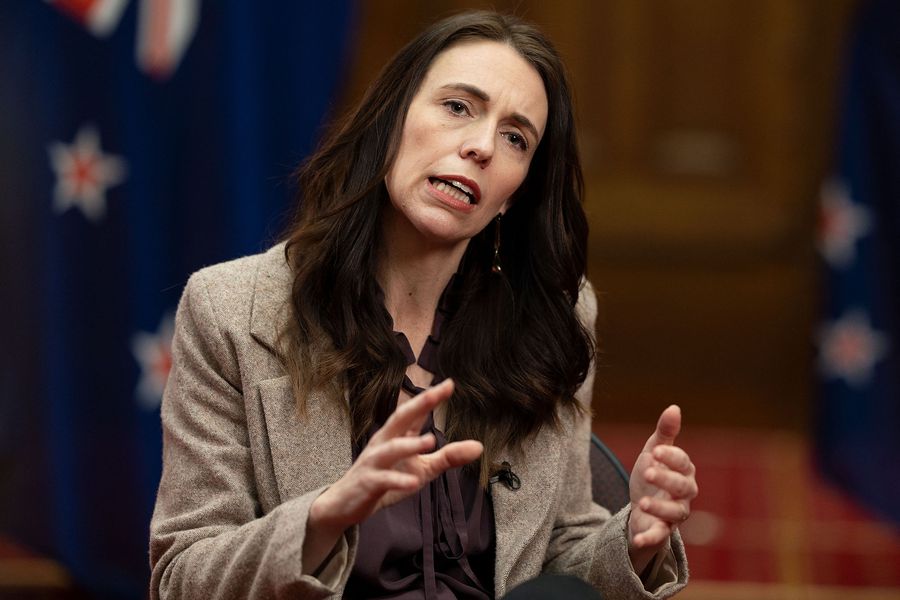
Mechanism by which New Zealand does not resort to arbitration with some TPP11 partners and considers the Boric
Although prior to the TPP-11’s entry into force, on January 1, 2019, New Zealand was listed as one of the seven countries that had already ratified it in Congress, the internal debate about the declining sovereignty implied by the mega deal was one of the first policy challenges it faced in Her first year in office was given by Prime Minister Jacinda Ardern.
The issue concerned not only the Green Party, part of the ruling coalition and organizer of mass protests in previous years against the agreement, but also Ardern’s Labor Party, which took part in the passive when the vote was taking place.
So when they came to the government, the side message (Messages exchanged, in Spanish) The mechanism they used to mitigate questions and move toward consensus broad enough to agree to the Comprehensive and Advanced Trans-Pacific Partnership (CPTPP or TPP-11) was on October 25, 2018.
This variant published by Jacinda Ardern’s government for TPP11 has resonated in Chile and more specifically in the government program recently presented by presidential candidate Gabriel Borek, where reference was made, but with the idea of applying it to treaties in force in Chile (which do not even include Now TPP11).
One of his economic advisors, Nicholas Grau, also advanced, The program specifies that “Chile will not unilaterally change any trade agreement.” However, they state in general terms that they will seek to “refresh aspects related to the investment chapters”.
Regarding the latter, they emphasized that “it should be requested to be exempted from the application of the dispute settlement mechanism in ad hoc international tribunals (as New Zealand has done)”. According to the Boric program, “it seeks to ensure the positive effects of the agreements (expanding the demand for our export products), overcoming the restrictions that were imposed to implement the policies necessary for the new growth moment necessary for the country.”
Although Ardern indicated at the beginning of 2018 that with the departure of the United States many concerns were dispelled, due to the withdrawal of a set of provisions for patents and pharmaceuticals, he admitted this. In the negotiations, his country was not able to cancel the Investor-State Dispute Settlement (ISDS), listed in Section 9b of Chapter 9 of the agreement, which complicated the progress of the project.
As described by an official New Zealand government website, it’s about “A mechanism allowing foreign investors to seek remedies directly against a CPTPP party for violations of the CPTPP Investment Provisions.”. They add that, as set forth in TPP-11, “ISDS claims shall relate to infractions of the investment segregation itself and the limited aspects of the financial services segregation.”
In the discussion, Green Party spokeswoman and deputy Gulriz Kahraman noted that the presence of the ISDS had “a crippling effect on our national sovereignty, This means that large international companies can challenge our government if we make policy changes that affect their profits.”
In this context, Kahraman noted, “Preventing other countries from using ISDS in New Zealand is a small thing we must do to make the best of a bad situation.”
To address precisely this, then-Secretary of Commerce David Parker, in parallel with the CPTPP negotiations, sought bilateral agreements that would mutually eliminate investor-state dispute resolution provisions.
The side letters, which can be used in various matters agreed by two countries outside the provisions of a multilateral agreement, in this case New Zealand has negotiated with them with Australia, Brunei Darussalam, Malaysia, Peru and Vietnam, that the mandatory aspects of the ISDS separation between New Zealand and those countries do not apply bilaterally”The information provided by the New Zealand Government is read.
There, they also note that “clear obligations and strong protections that limit the scope of ISDS mechanisms to protect a state’s right to regulate and prevent abuse of this mechanism are part of the treaty.”
Although, according to local media, Kahraman claimed at the time that it was disappointing that side letters It was with “relatively small countries”, while Japan and Chile “still have the freedom to sue our government for access”The fact is that the mechanism has convinced a sufficient part of the New Zealand political class to agree to the TPP-11, and among them is also a consensus that new agreements that include provisions such as the ISDS will not be signed.

“Reader. Travel maven. Student. Passionate tv junkie. Internet ninja. Twitter advocate. Web nerd. Bacon buff.”
